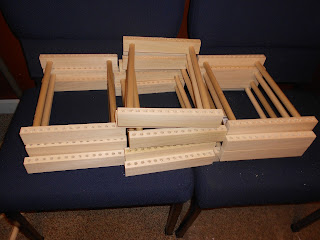Religion - we read Chapter 9 in O.H.F. on Pentecost,
the coming of the Holy Spirit and the birthday of the Church. We then did this beautiful coloring page:
http://www.sjtb.org/images/DescentoftheHolySpirit.pdf
English & Poetry - the two PPL lessons for Weeks 17 & 18 were to
practice cursive writing and to
discuss a story by Aesop. We first practiced the last two verses of the poem "The Months" and then worked on a copywork sheet for one of the stanzas, practicing cursive or trying it out for the first time. Most of the children copied at least a portion of the writing and many chose to draw something to depict the words of the poem. We then read the Aesop fable "The Old Lion and the Fox", in the popular play format, acting out the story twice after the reading. This had been a favorite activity of the class this second semester.
History & Geography - we read aloud & discussed a story about the Roman farmer-turned-leader of Rome,
Cinncinnatus. For Geography, we studied a
map of Ancient Rome, found and colored the seven hills of Rome and the Tiber River (see the area to the right of the river to count the seven ancient hills; later hills are to the left of the river on the map).
Presentations - Patrick Q. presented a very interesting black catepillar he had found and Isabella S. brought in a black millipede to show the class.
Science - we talked about ways in which animals protect themselves, camouflage and hibernation among them (see CCM Week 18). We looked at a book for some interesting examples of camouflage and then headed outside to play a game of
predator vs. prey, called Scram & Freeze. The children had a great time pretending to be hunted bugs on the escape after a rock had been turned over, or the one doing the hunting. We also looked for real examples of this in nature and found some very industrious ants scrambling to hide their eggs after we turned over their log.
See you next week for the Field Trip!!









